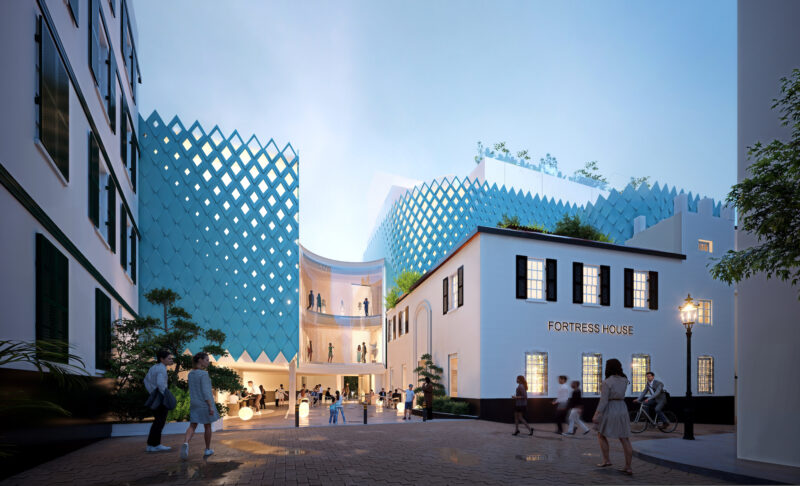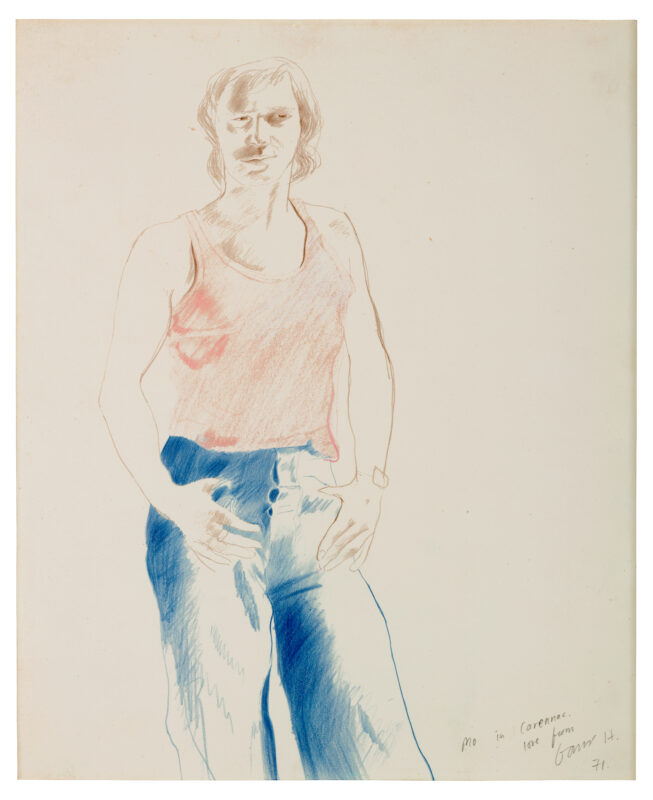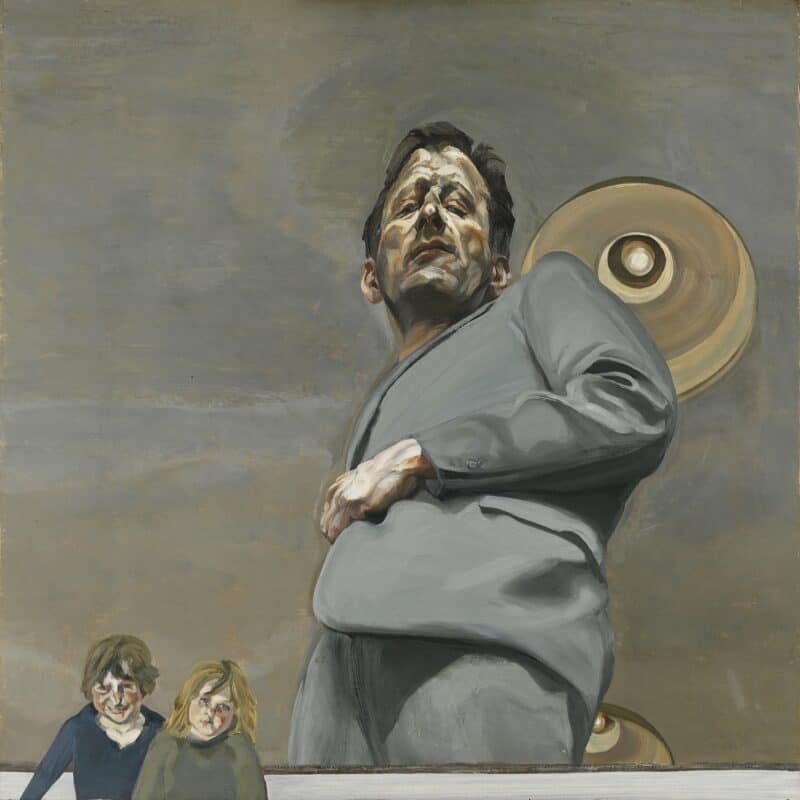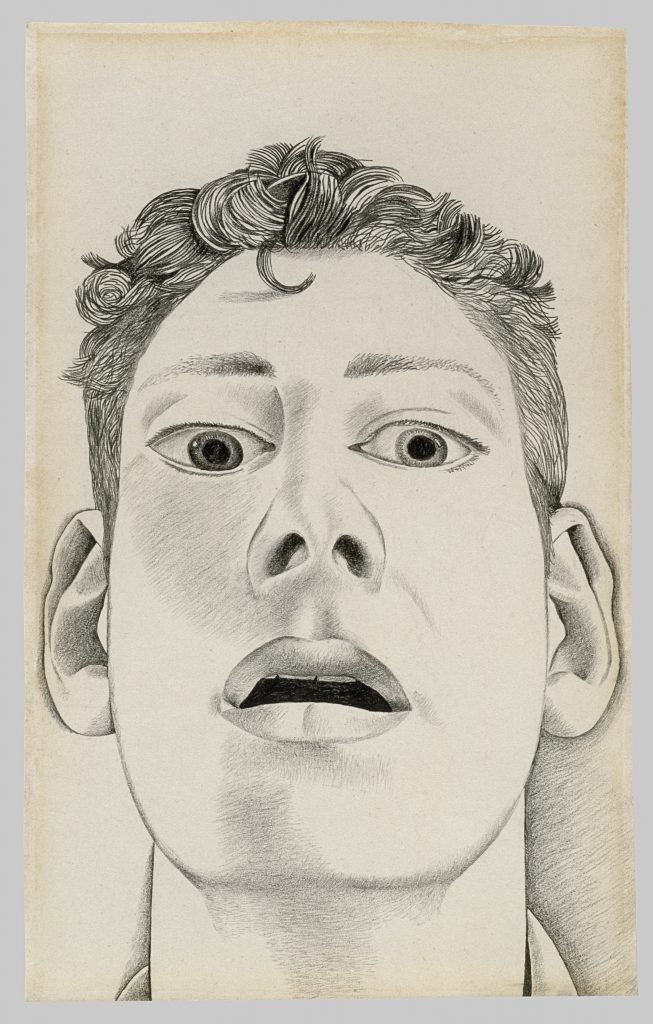
Startled Man: Self-portrait, 1948 Pencil on paper, 22.9 x 14.3 cm Private collection © The Lucian Freud Archive / Bridgeman Images
Lucian Freud: The Self-portraits will be the first exhibition to focus on the celebrated artist’s visceral
and unflinching self-portraits. Executed over almost seven decades on canvas and paper, the exhibition will bring together around 50 works that chart Freud’s (1922-2011) artistic development: from his early, more linear and graphic works to the fleshier painterly style that became the hallmark of his later work. The majority of the works are from private collections and a number have not been seen publicly for several decades.
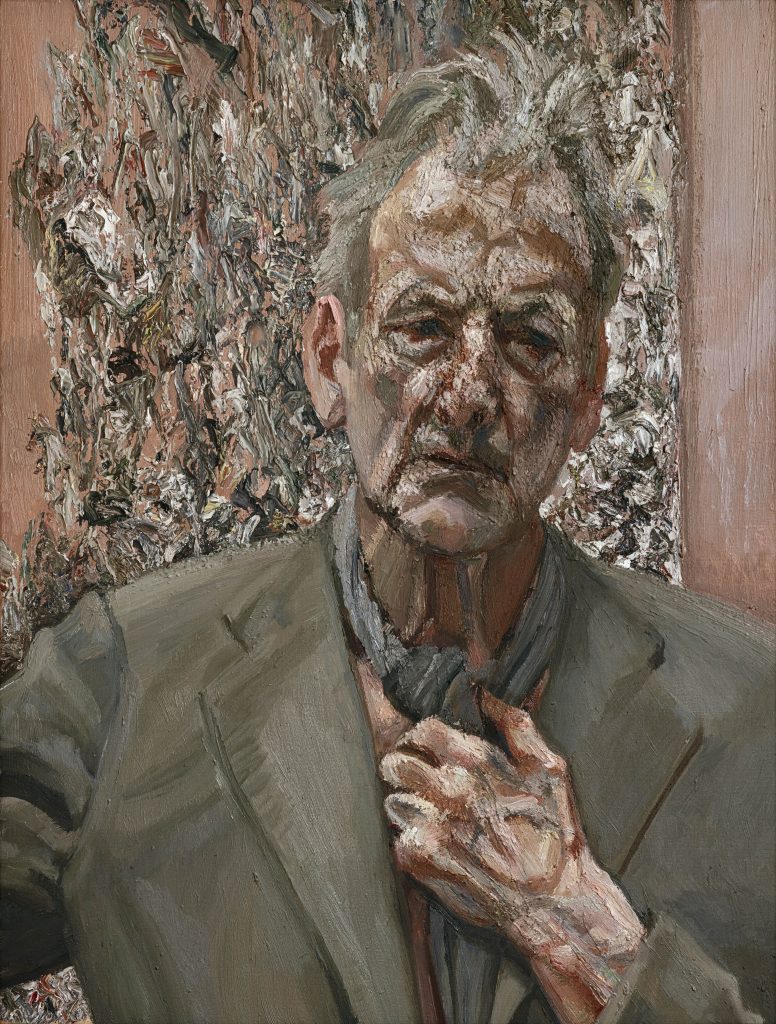
Self-portrait, Reflection, 2002 Oil on canvas, 66 x 50.8 cm Private collection © The Lucian Freud Archive / Bridgeman Images
The exhibition will be organised following a loose chronology in six sections, revealing Freud’s unexpected and wide-ranging exploration of the self-portrait. Freud was once asked if he was a good model for himself, to which he replied “No, I don’t accept the information that I get when I look at myself and that’s where the trouble starts”. This ‘trouble’ led to a continuous confrontation with his self-image that went in tandem with his interrogation of paint. This will be highlighted within the first section that places his first major self-portrait, Man with a Feather, 1943 (Private Collection) alongside his late work Self-portrait, Reflection, 2002 (Private Collection). While the first reveals the tight brushwork that would define his early period, the latter exemplifies the use of impasto and the technical virtuosity of his mature work.
The second section will focus on Freud’s early works, including his drawings and sketchbooks. They reveal a playfulness in his presentation of his own self-image that was especially evident into the 1960s. He depicts himself in the mythological guise of Actaeon (Self-portrait with Antlers), 1949 (Private Collection), and as a character in illustrations for plays and stories such as Flyda and Arvid, 1947 (Private Collection). Freud also began to put himself in and out of the frame, his eyes peering from the bottom of a page, or his side profile from the edge of the canvas such as in Still-life with
Green Lemon, 1947 (Private Collection).
Freud’s work from the 1950s traces a gradual transition towards his mature style, prompted in part by changes to his working method, which will be the focus of the third section of the exhibition. Hotel
Bedroom, 1954, (The Beaverbrook Foundation, Beaverbrook Art Gallery, Fredericton) is the last work Freud painted sitting down at the easel. He said, “I felt I wanted to free myself from this way of
working. When I stood up I never sat down again”. Freud’s intense friendship with Francis Bacon contributed to another development, seen in works such as Self-portrait, c.1956 (Private Collection).
Adopting the use of more coarse hog’s hair brushes helped further open up his brushwork towards
the sweeping impasto that would become characteristic of his later work. Further sections of Lucian Freud: The Self-portraits will reveal his working process, where a number of sketchbooks and unfinished portraits will be on display. At times Freud gave his brushwork a sharper edge, to suggest a door lintel or trace a separation between wall and floor, locating the artist in his own studio. At others he drew attention to the reflected source of his self-image by depicting mirrors, which can be seen in Hand Mirror on Chair, 1966 (Private Collection). Freud stated that he used mirrors to remain true to visual experience, as well as to try and see himself from unconventional angles and capturing aspects of his face visible to others but that he remained less familiar with.
The final sections will examine Freud’s later self-portraits, in which his mastery of paint is matched
by the imposing and uncompromising image of himself. Works such as, Reflection (Self-portrait), 1985 (Private Collection, on loan to the Irish Museum of Modern Art) possesses the intensity and penetrating stare for which Freud was renowned throughout his career. In 1993, shortly after he turned 70, Freud completed Painter Working, Reflection, 1993 (Private Collection): “Now the very least I can do is paint myself naked.” Having given new expression to the nude in his portraits of others, Freud turned his unflinching gaze back onto himself, depicting himself naked but for a pair of unlaced boots.
Between 2002 and 2003 Freud painted two further self-portraits. Sombre in mood, they show him now in his 80s, clutching his scarf and resting his chin on his hand, his face gaunt and built up with thick layers of paint. Freud’s portraits chart a life’s journey, from young boy to old man, in what was effectively an ongoing study into the process of ageing and the changes it inflicted on his own physical form. Few other artists in the 20th century have portrayed themselves with such consistency.
Lucian Freud: The Self-portraits Royal Academy Sunday 27th October 2019 – Sunday 26th January 2020
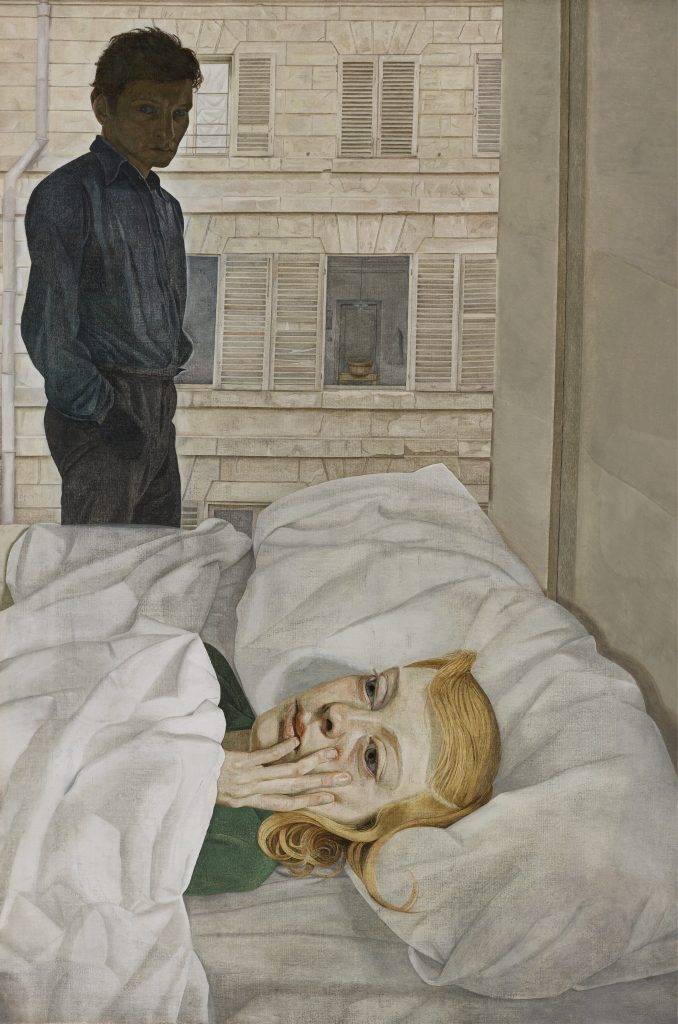
Hotel Bedroom, 1954 Oil on canvas, 91.5 x 61 cm Gift of the Beaverbrook Foundation, collection of the Beaverbrook Art Gallery © The Lucian Freud Archive / Bridgeman Images
About The Artist
Lucian Freud, OM (8 December 1922 – 20 July 2011) is celebrated as one of the foremost 20thcentury painters. Born in Berlin in 1922 to Ernst L. Freud and the grandson of Sigmund Freud, Freud’s family moved to Britain in 1933 to escape the rise of Nazism. In 1939 he attended the East Anglian School of Painting, after enrolling for only a short time at the Central School of Arts and Crafts in London the previous year. Freud moved to London in 1943 and over the next few years he became closely involved with the London arts scene, forming a particularly close friendship with Francis Bacon. In 1944 Freud was given his first solo show at the Lefevre Gallery in London.
Freud’s early career as a painter was influenced by surrealism, but by the early 1950s his paintings tended towards realism and drawing became less prevalent. From 1954 Freud no longer sat down to paint, finding standing to be less restrictive, and by 1956, having chosen to work with coarser hog’s hair brushes there was a dramatic stylistic shift in his work. By 1966 Freud moved away from painting only the heads of sitters to full-length portraits, although his self-portraits remained focused on his head and torso. In 1977 Freud moved to a top-floor apartment in Holland Park, which continued to be his studio for the rest of his career. In 1990 Freud met the artist David Dawson, who became Freud’s studio assistant and remained his close friend, assistant and model until Freud’s death. In 1993 Freud was made a member of the Order of Merit, limited to only 24 living recipients at any one time. Freud was an intensely private man, and his paintings, completed over a 60-year career, are mostly of friends and family. He died in 2011 at the age of 88, having worked until two weeks before his death.
